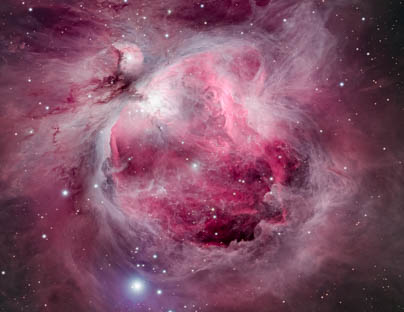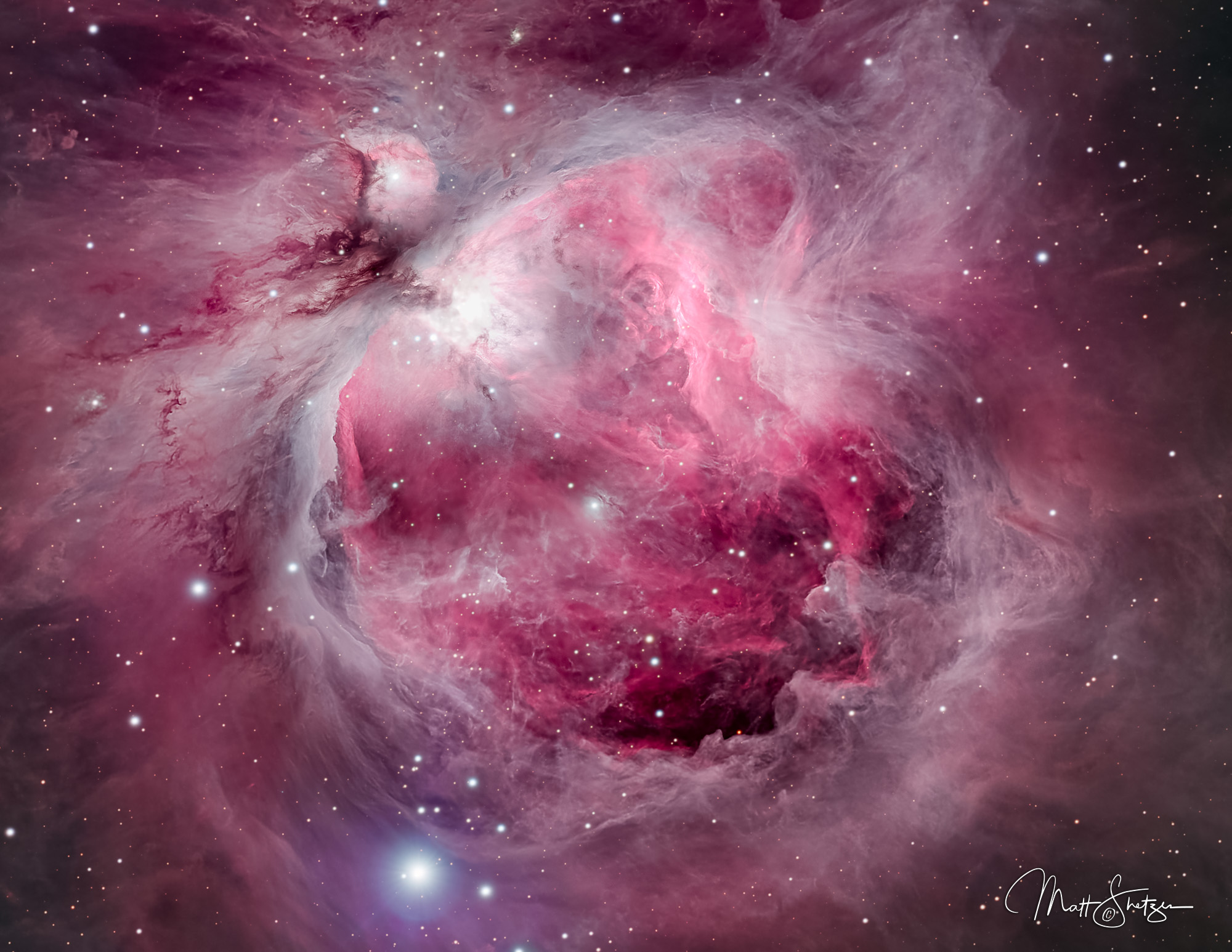Photographing M42, the Orion Nebula, is one of the most rewarding experiences in astrophotography. As one of the brightest and most colorful deep-sky objects visible from Earth, it’s accessible to both beginners and advanced imagers. The nebula is visible even with the naked eye as a fuzzy patch in Orion’s sword, but through a camera sensor and long exposures, it explodes into a canvas of glowing hydrogen clouds, intricate dust lanes, and radiant starlight. Its core, where the Trapezium Cluster resides, burns brilliantly, illuminating the surrounding gas with sharp detail and remarkable intensity.
Capturing M42 is as much about restraint as it is about exposure. The dynamic range of the nebula is vast—its bright core can easily become overexposed while trying to bring out the fainter outer reaches. To manage this, astrophotographers often blend multiple exposures, a technique known as high dynamic range (HDR) imaging. Short exposures preserve the structure of the Trapezium, while longer ones reveal the delicate veils of gas that drift outward into space. Combining these frames in post-processing requires care but yields a balanced image that showcases the nebula’s true complexity.
The Orion Nebula also lends itself beautifully to narrowband imaging, where specific filters isolate wavelengths of hydrogen, oxygen, and sulfur to construct dramatic, false-color images. This can unveil textures and motions hidden in natural light, giving the nebula a more sculptural and surreal quality. Whether imaged in full-spectrum RGB or through narrowband techniques, M42 remains a subject of endless fascination. It changes with every lens, sensor, and processing style—each photograph a personal interpretation of a cosmic nursery where stars are still being born.”
| Object | Orion Nebula |
| Link | https://www.shetzers.com/orion-nebula-and-running-man/ |
| Wiki Link | https://en.wikipedia.org/wiki/Orion_Nebula |
| Hemisphere | Northern |
| Constellation | Orion |
| Other Names contained in image | Messier 42, M42, NGC 1976 |
| Imaging telescopes or lenses | Takahashi FSQ -106ED4 |
| Imaging cameras | QHY268M |
| Mounts | Software Bisque Paramount MYT |
| Focal reducers | None |
| Software | Software Bisque The Sky X, N.I.N.A., PHD Lab PHD2, Viking, PixInsight, Photoshop, Lightroom |
| Filters | Astrodon LRGB Gen2 E-Series Tru-Balance 36mm unmounted. Chroma Technology Narrowband 3nm Ha, SII, OIII – 36mm Unmounted |
| Accessories | Moonlite NightCrawler 35 focuser, Maxdome II, Digital Loggers Pro Switch, Sky Alert Weather Station, Pegagsus Ultimate Powerbox v2, Starlight Xpress filter wheel, Alnitak Flip-Flat |
| Guiding Telescope or Lenses | Orion 60mm Guide Scope |
| Guiding Camera | ZWO ASI290MM Mini |
| Imaging Dates | 10/10/22,10/13/22,10/14/22,10/29/22,10/31/22,11/1/22,11/19/22,11/20/22,11/21/22,11/22/22,11/24/22,12/16/22,12/17/22,12/18/22 |
| Frames | Luminance: 70×300″ (5.8h) Gain 25, Photographic Mode, Temp -25C, Bin 1×1 Luminance: 118×30″ (1h) Gain 25, Photographic Mode, Temp -25C, Bin 1×1 Red: 51×300″ (4.3h) Gain 25, Photographic Mode, Temp -25C, Bin 1×1 Red: 66×30″ (0.6h) Gain 25, Photographic Mode, Temp -25C, Bin 1×1 Green: 54×300″ (4.5h) Gain 25, Photographic Mode, Temp -25C, Bin 1×1 Green: 78×30″ (0.7h) Gain 25, Photographic Mode, Temp -25C, Bin 1×1 Blue:55×300″ (4.6h) Gain 25, Photographic Mode, Temp -25C, Bin 1×1 Blue:71×30″ (0.6h) Gain 25, Photographic Mode, Temp -25C, Bin 1×1 |
| Integration | 21.9 |
| Darks | 50 |
| Flats | 20 per Filter |
| Flat Darks | 40 |
| Bortle Dark-Sky Scale: | 2 |
| RA center | 83.78653767 |
| DEC center | -5.359578916 |
| Pixel scale | 3.76 |
| Resolution | 6280 x 4210 |
| Locations | Sirus 3.5m Observatory, Carbondale Colorado |
| Data source | Backyard |
| Seeing | Average |
| Post Processing Techniques | PixInsight to Photoshop to Lightroom |


